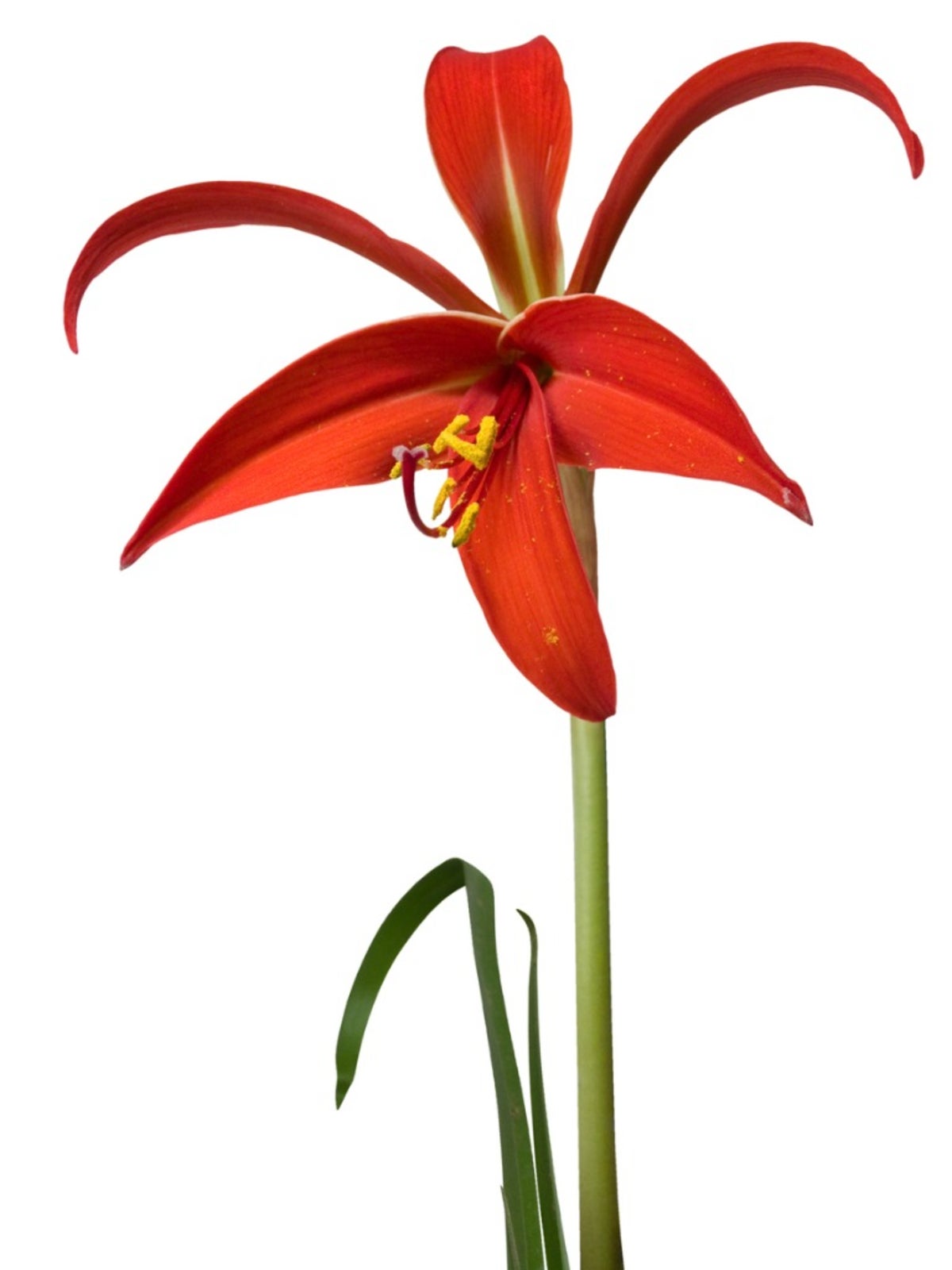What Is An Aztec Lily – How To Care For Aztec Lily Bulbs


If you’re a gardener, there's a good chance you have a photo gallery on your phone or social media featuring ‘wow factor’ flowers that you’ve either snapped in person or captured in the digital realm – you know, the kind where you have to talk yourself down from making yet another botanical adoption. We’ve all been there – and adopted many. The Aztec lily (Sprekelia formosissima) was like that for me, as its unique bright red flowers are simply irresistible. What is an Aztec lily? Read on to learn more and get the scoop on Aztec lily care.
What is an Aztec Lily?
Native to Mexico’s rocky hillsides, Aztec lilies are a member of the Amaryllis family, and its flowers are actually a bit reminiscent of an amaryllis. The Aztec lily flower has six 6 inch (15 cm.) long petals in a unique configuration, which are at the apex of a foot long (31 cm.) scape (leafless stem). The top three petals are upright and curled back at the tips. The lower three petals hang downward and are furled together a bit at the base enclosed over the stamens. The petal color most associated with Aztec lily is scarlet or crimson red; however, there are cultivars available with pink and white. The long, narrow dark green leaves of an Aztec lily tend to lose their perkiness as they grow longer and are likened to those of a daffodil. If you are seeking a bulb plant that reliably flowers every year, the Aztec lily may disappoint, as it appears to be a finicky sort. In perennial outdoor planting, blooming typically occurs in late spring to early summer and, depending on the cultivar, in the fall as well. Seasonal (new) plantings could be delayed several weeks longer. More than one flower scape may be produced annually from each bulb, but not in tandem. The blooming period of container houseplants can prove to be variable.
How to Care for Aztec Lily Plants
The Aztec lily is a tender bulb plant and is rated for USDA zones 8 to 10. Those within these zones can be growing Aztec lilies in the ground year-round, provided a few inches (8 cm.) of mulch is offered to the plant during the winter months as an extra layer of protection. When planting outside, be sure to plant in a full sun location in well-draining alkaline soil, after the threat of frost. When positioning the bulb in the soil, leave a bit of the bulb neck above the soil line and follow the recommended spacing for Aztec lily bulbs, which is 8 to 12 inches (20-31 cm.) apart and 4 inches (10 cm.) deep. If you don't reside in the recommended zones, consider growing Aztec lilies in containers in some well-draining potting mix. Aztec lily bulbs do not like to be dug up and can respond by not blooming for several years afterwards, which would not be a desirable outcome. However, if you're outside the recommended USDA zone, you can dig up your Aztec lily bulbs in the fall and store them in a dry, frost-free location during the winter, and try your luck the following year. Aztec lilies in containers can be full-time houseplants if they receive four hours of sun per day, or they can be placed outdoors with a winter curfew and protection from excessive rainfall. Stop watering the container plant when you see signs of dormancy (leaf dieback), and resume watering and light fertilizing at the first signs of renewed growth.
Gardening tips, videos, info and more delivered right to your inbox!
Sign up for the Gardening Know How newsletter today and receive a free copy of our e-book "How to Grow Delicious Tomatoes".

Shelley Pierce was a writer for Gardening Know How, contributing to hundreds of articles for the site.
-
 Grow ‘Karl Rosenfield’ Peony Plants For The Ultimate Frilly Border Beauties And Cut Flowers
Grow ‘Karl Rosenfield’ Peony Plants For The Ultimate Frilly Border Beauties And Cut FlowersFor frilly double magenta peony petals infused with a heady fragrance, grow ‘Karl Rosenfield’ peony plants. Here’s how to cultivate the ultimate plushy blooms
By Tonya Barnett
-
 10 Common Composting Problems That Can Spoil Your Garden Gold – Plus Easy Fixes
10 Common Composting Problems That Can Spoil Your Garden Gold – Plus Easy FixesLearn how to troubleshoot common composting issues before they ruin your stash – from bad smells and bugs to materials not breaking down as they should.
By Susan Albert